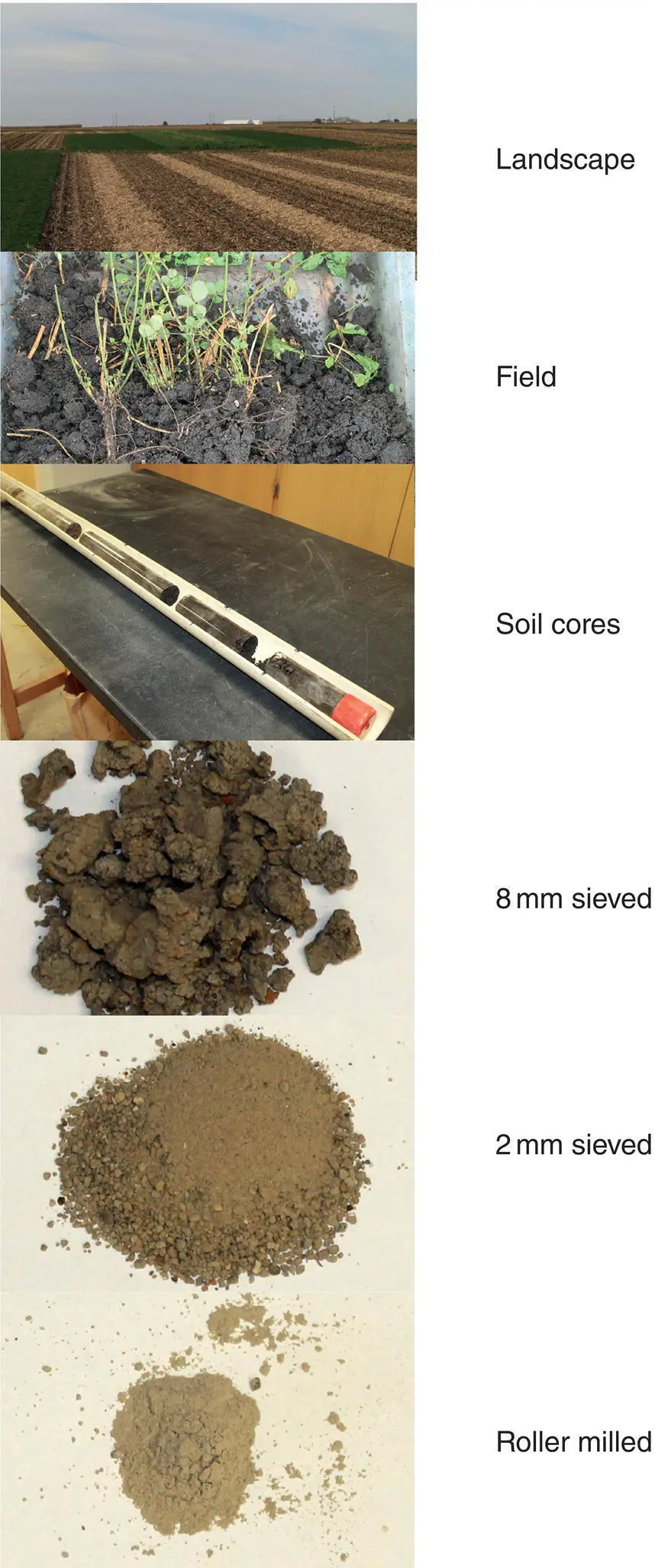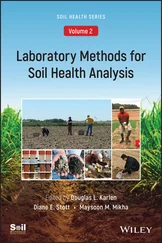Table 3.3 Categories of soil health tests, each with unique characteristics but a common goal.
| Type of test |
Characteristics |
Common Goal |
| On‐farm or in‐field |
Portable, generally quite simple, qualitative, interactive, provide general contrasts |
Successfully identify if soil properties change |
| Commercial laboratory |
Rapid and high throughput, primarily focused on chemical indicators, with a few physical and biological measurements, generally group responses in categories |
| Research projects |
More precise but often very slow turn‐around, capable of identifying fine‐scale differences, difficult to generalize, specific methods may vary |
The three categories of soil health tests listed in Table 3.3thus serve different purposes. On‐farm or in‐field qualitative tests are generally used to build an awareness of what soil is, how it forms, and the types of functions (sustaining productivity, filtering and buffering, controlling water entry, retention and release). Commercial or research‐based laboratory tests generally require collection of numerous samples and sending them to a separate location for analysis. Also, since the farmer/landowner/interested individual is often not the one collecting or analyzing the samples, there can be disconnects or even lack of communication between the person providing analytical data and the one who will ultimately use the information to modify decisions and/or change soil and crop management practices. Regardless of the specific type of test, a very important cultural change associated with development of soil health concepts has been the act of bringing people together, often in the field, to evaluate the soil and thus better understand benefits that often cannot be easily seen through printouts of laboratory data. For example, an area prone to erosion can often be documented more easily by evaluating the slope, amount of groundcover, and presence of ephemeral or permanent gullies than looking at data showing soil texture, SOM, or fertility changes.
Another difference among the three categories of soil health tests ( Table 3.3) is that they are generally applied at different scales. For laboratory tests extensive pre‐processing, such as sieving, grinding or sub‐sampling, will often be required as samples are prepared for analysis using various analytical instruments. In contrast, on‐farm or in‐field tests can often help producers recognize impacts of past and current soil management decisions within a field or landscape more easily than viewing multiple pages of laboratory data. Furthermore, if the small amount of soil submitted for laboratory analysis is not accompanied by an appropriate amount of metadata ( i.e ., data about the samples, site, and analytical methods) it may be impossible to fully capture what can be seen within‐field by the naked eye. Another visual assessment technique that has become more common since the emergence of soil health conferences and field days is the increased use and familiarity of soil pits to show producers how their crop production practices are influencing plant root systems and soil structure. Rainfall simulators are also used in soil health field days to demonstrate the benefits of keeping soil covered and slake tests are used to show the importance of stable soil aggregates and SOM as compared to cloddy, compacted soils.

Figure 3.4Potential scales at which soil health indicators can be assessed.
(Photo credit: Gary Radke, USDA ARS).
Two important realities of soil health assessment, regardless of the specific test being used, are the recognition and improved understanding of soil function. Having that knowledge enables NRCS and other consultants to help producers evaluate several soil‐related natural resource concerns ( Table 3.4) and to recognize that although any of the three types of soil health tests could be used, some may be more useful for determining if a specific concern is present and subsequently how to address it. Therefore, it is important to recognize that the assignments we list in Table 3.4simply represent common measurements and that other tests could easily be used.
Table 3.4 Potential soil health tests for evaluating various natural resource concerns.
| Natural resource concern |
Most common type of soil health assessment |
| In‐field |
Commercial lab |
Research lab |
| Erosion |
✓ |
|
|
| SOM depletion |
✓ |
✓ |
✓ |
| Elevated salts |
✓ |
✓ |
✓ |
| Excess water |
✓ |
|
|
| Insufficient water |
✓ |
|
|
| Pesticide transport |
|
✓ |
✓ |
| Excess pathogens |
✓ |
✓ |
✓ |
| Heavy metals |
|
✓ |
✓ |
| Sediment in surface waters |
✓ |
✓ |
✓ |
| Elevated water temperatures |
✓ |
|
|
| Degraded plant condition |
✓ |
|
|
| Wildfire hazard |
✓ |
|
|
| Odors |
✓ |
|
|
It is also important to recognize that each type of soil health test will have variability associated with the end result. Furthermore, documenting changes in soil properties is also challenging by the fact that soils are inherently variable. A test with high variability may complicate its use to quantify changes due to management simply because any true changes become lost within the larger variability of the test itself. Selecting the appropriate type of test and scale at which to use it is therefore an ongoing question in soil science. Thus as land management practices change, soil health measurements may also have to change to detect subtle changes in soil properties or functions.
The living, dynamic nature of soil resources contributes to what some consider the futility of soil health assessment. For example, depending on site‐specific field properties, the number of soil samples required for a meaningful soil health measurement can vary widely (Cambardella et al., 1994; Hurisso et al., 2018; Ladoni et al., 2015; Morrow et al., 2016; Necpálová et al., 2014). Also, although there are several types of qualitative and quantitative tests that can be used to analyze soil health properties, the decision on which approach to use will ultimately depend on the type of questions that are to be addressed. For example, sediment in surface waters can be detected using in‐field techniques by simply noting the presence of soil particles in water being collected as run‐off from a specific area. These in‐field tests could be made more quantitative by documenting the amount of sediment per unit volume of water if a known volume is collected, the water is evaporated, and the remaining amount of sediment is weighed. However, if the goal is to determine the concentration of a specific element or chemical in the run‐off water, the surface water samples that are being collected will have to be sent to a commercial or research laboratory where analytical tests beyond the scope of an in‐field test can be made. Or, substantial in‐field or edge‐of‐field instrumentation will need to be installed to quantify these concentrations.
Opinions regarding the utility or futility of soil health assessment are often based on the challenges of documenting benefits from soil health approaches which are highly dependent on the question of interest, type of test used, and scale at which the test is applied. We advocate that to be considered soil health research, assessments must include soil physical, chemical, and biological properties, although some would argue that focusing on one particular soil property is sufficient. We consider that latter approach to be soil physical, soil chemical, or soil biological health and not soil health per se.
Читать дальше













